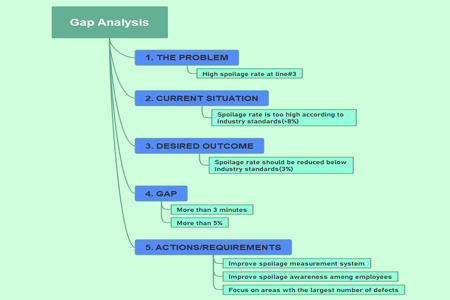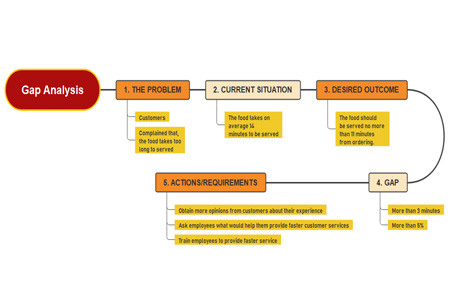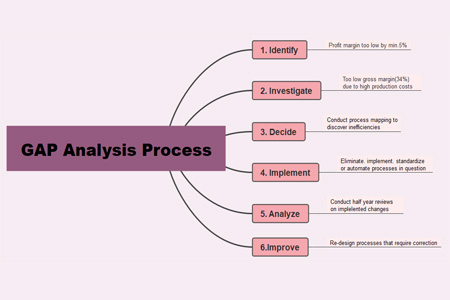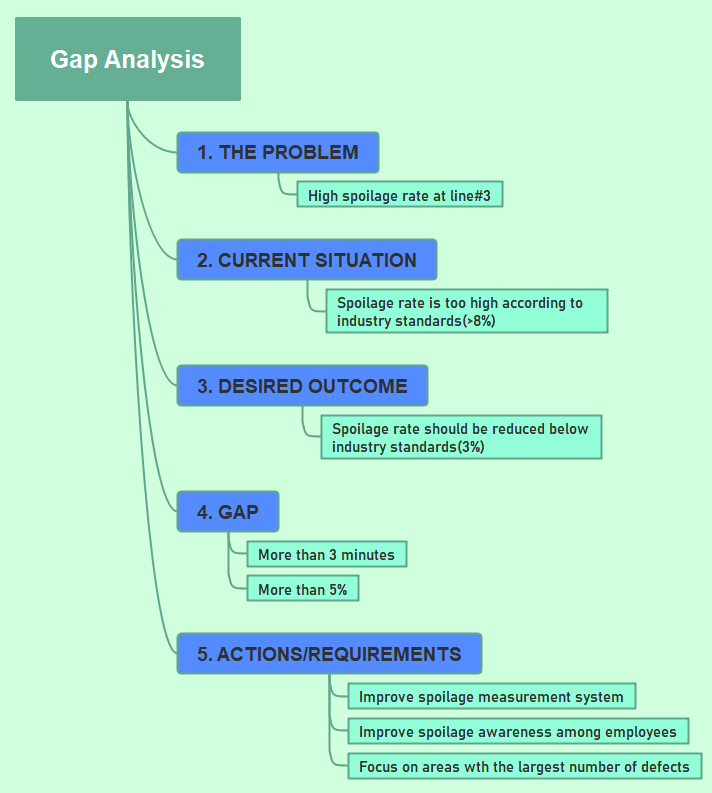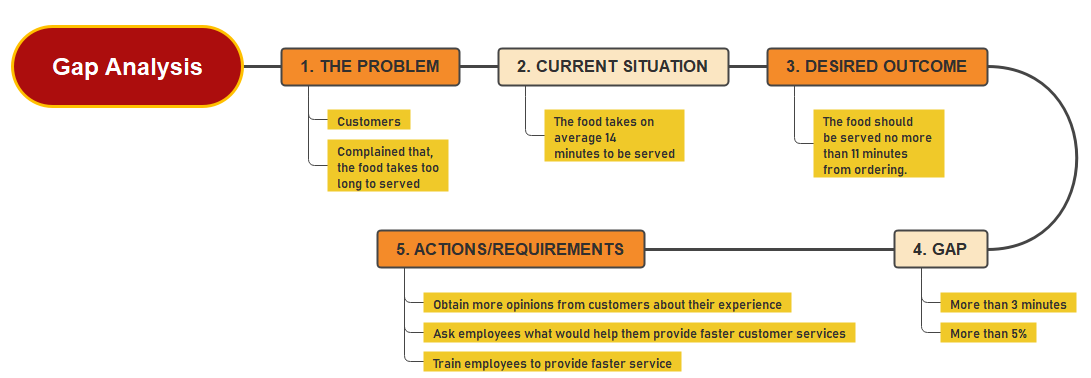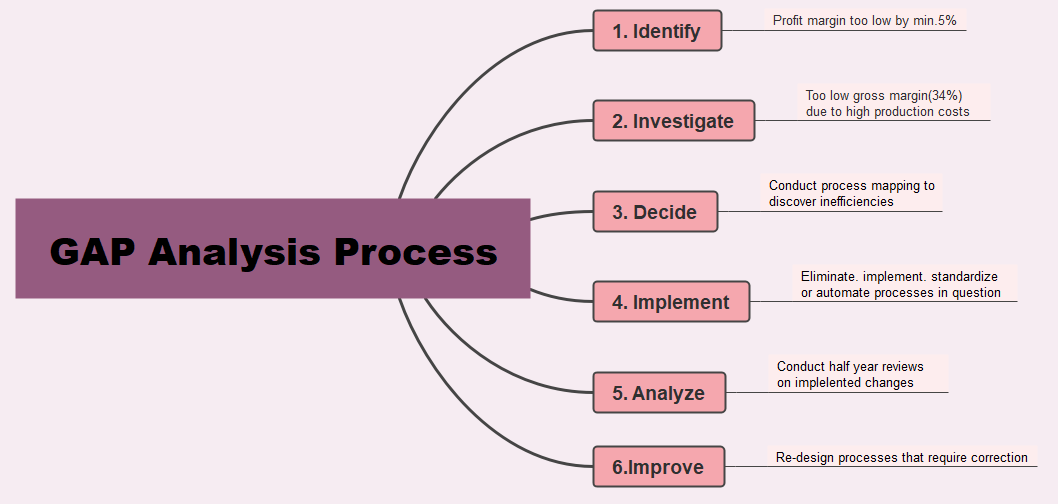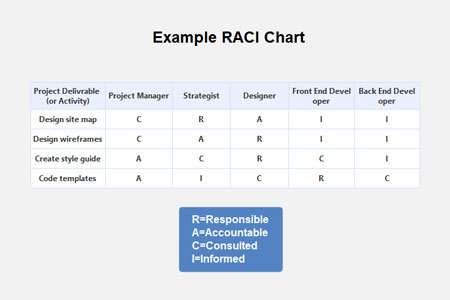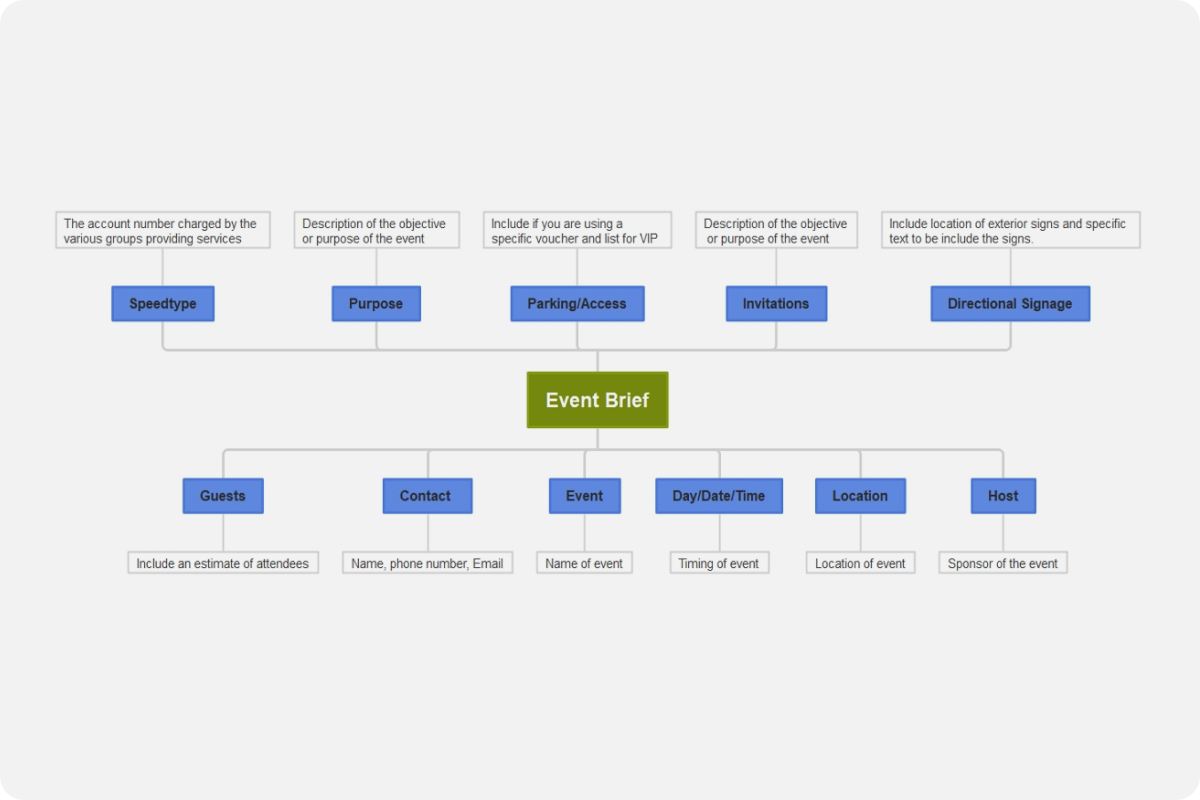Gap Analysis Template
Find out if your company's performance is on the right track leading to its future desired goals with a gap analysis.
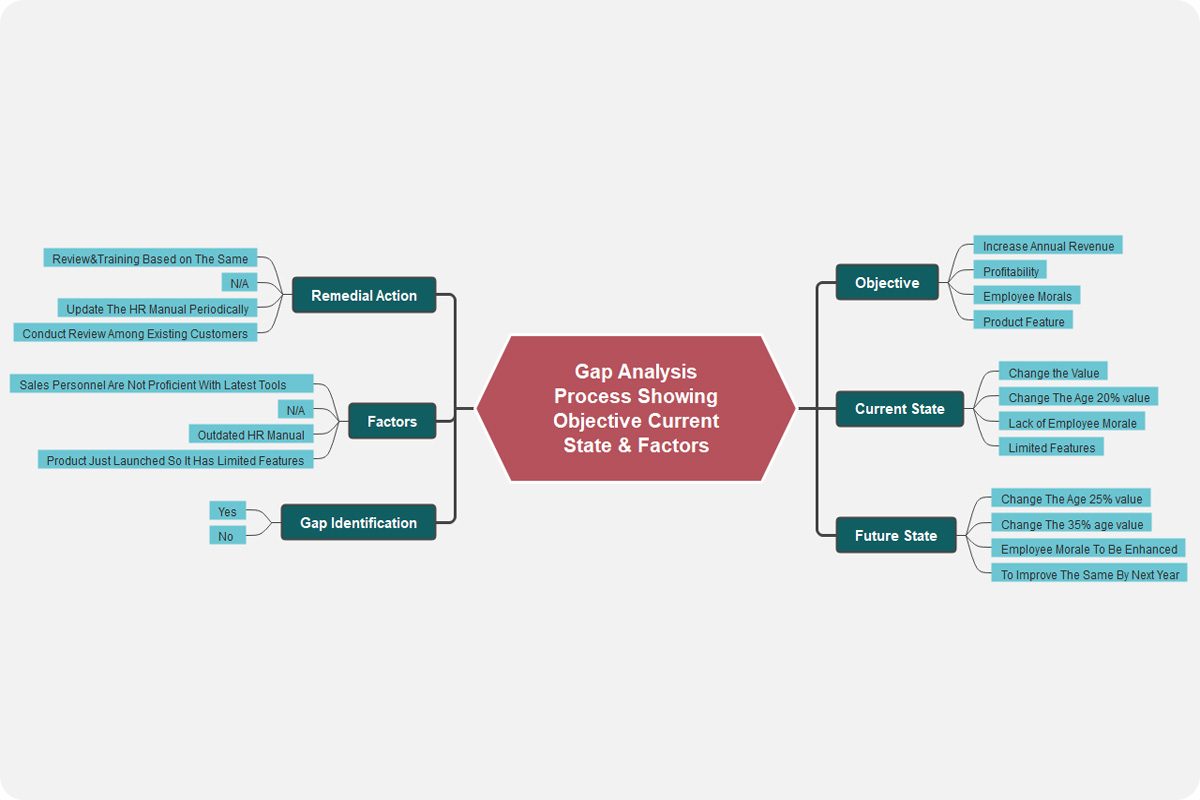
More Gap Analysis Template
About the Gap Analysis Template
What is a gap analysis?
A gap analysis is an assessment of a company's current performance and the future state of where one wants to see their business. Several metrics are used in gap analysis, including quantitative, qualitative, and subjective measures. Non-profit organizations usually use sales or revenue as the primary metrics to be analyzed.
Using the gap analysis, one basically starts with the current status of a business, company, or team. The organization then comes up with the prospected state of the business, company, or team. The fund part of the process lies in the action plan the company will take from its current state to the company's desired state in the future. The key is to ask relevant and good questions to determine the path to the company's desired state.
Gap analysis encourages change within the organization or company. As the team lists the company's facts and specific gaps, they can clearly determine what needs to be done to reach future goals. The analysis is a standardized framework that teams can apply to their companies. The use of gap analysis does not limit to specific areas, as all organization aspects can benefit from using this technique, including:
- Quality control
- Employee satisfaction
- Human resources
- Sales
- Financial performance
Pros and Cons of Gap Analysis
The importance and effectiveness of gap analysis vary by industry or company. Regardless, it is also a valuable tool to have an in-depth view of your company to help it grow. The following advantages of gap analysis can possibly lead to years of success for your business.
Pros
- It provides an in-depth look at the company's current processes.
- An opportunity to assess if the processes are working as effectively and efficiently as possible.
- Encourages the company to strategize around what it wants it to look like and specific ways to get there.
- Allows companies to have better use of finances and other resources.
- It gives teams a chance to immediately diagnose issues and formulate solutions through vital changes in company practices and processes.
Cons
- Gap analysis does not always consider the actions, making it challenging for the company to keep track of its competitor's growth potential.
- Employees might also have apprehensions or suspicions if the company decides to hire a consultant to conduct a gap analysis. This situation is especially true if the analysis involves evaluating employees' skills.
- Time and cost are two of the primary disadvantages of having a gap analysis. If a company hires a consultant to perform the evaluation, the activity will take valuable time away from managers and employees.
- Quantitative measures are used in gap analysis. However, numbers can frequently be deceiving, as businesses usually go through recurring changes because of external factors such as the time of the year, holidays, or changing fashion trends.
Steps of a Gap Analysis
Suppose you decide to follow a cost-benefit analysis template; there are several positive reasons for businesses and organizations to choose this method as part of their decision-making process. On the other hand, this method also has limitations and potential disadvantages and must be considered before relying solely on the cost-benefit analysis.
Pros
- Cost-benefit analysis is data-driven, allowing an organization or individual to assess a decision or potential projects free of personal biases and opinions. Since it is evidence-based, the method helps your business be more data-driven and logical in its operations.
- As business decisions are typically complex, cost-benefit analysis streamlines significant points and simplifies decisions. By reducing a decision to benefits versus costs, the cost-benefit analysis can make them more straightforward and less complex.
- Since the method allows you to sit down and outline all potential costs and benefits related to the project, it can help you and your team uncover the not-so-obvious factors like intangible or indirect costs.
Cons
- Indeed the method helps you outline projected costs and benefits associated with the business decision; however, it can be a handful to predict all variables and factors that can impact the outcome. The changes in market demand, global business environment, material costs can sometimes be unpredictable and inconsistent.
- It is a given that the cost-benefit analysis is data-driven. However, if one relies on inaccurate and incomplete data to complete the cost-benefit analysis, the results will also be incomplete and inaccurate.
- It is most ideal for short and mid-length projects only. A cost-benefit analysis will likely miss the mark for various reasons for business decisions and projects involving longer timeframes. It can be challenging to make accurate predictions for long-term projects. There is also a possibility that long-term forecasts will not correctly account for many variables like inflation, which can significantly impact the overall accuracy of the analysis.
- Using the cost-benefit analysis removes the human element of the overall business decision. The desire to create a profit indeed drives most companies; however, there are also non-monetary reasons a company might decide to pursue a decision or a project. In this case, it can be a handful to reconcile business cases with moral perspectives.
Gap Analysis Templates
Every company or consultant tasked to conduct gap analysis has varying approaches to outline and structure their analyses. Here are some basic examples of what a gap analysis template looks like.
The first example above is a straightforward template of gap analysis. It is about a website design that is scheduled to go live. Your template does not need any complexity, and the more straightforward it is, the easier it is to understand by other members of the analysis team. This template is ideal for companies or organizations that target to analyze a single area or project.
The second example is a rather complex one with more columns being placed for additional categories. If the analysis team wants to be more precise with the process, they can use this template. It shows the objectives, current state, future state, gap identification, factors, and remedial actions. With several categories on this analysis, it promises a better absorption of new ideas with clarity, saving valuable time and encouraging everyone in the team to increase standard work.
This third gap analysis template involves several categories similar to the second example. Looking into the illustration above, the analysis team provided more specifications, especially on the desired future state, current state, and the identified gap. As you create your gap analysis, it is vital to remember that it also involves quantitative measures, so providing numbers, scales, and percentages is just fitting.
